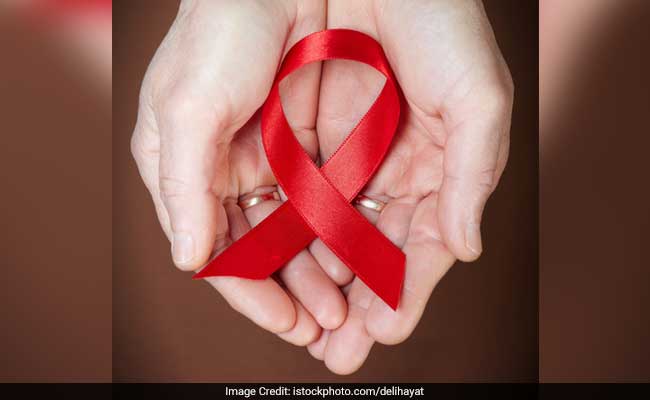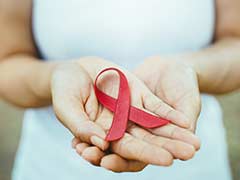World AIDS Day is observed on 1st December each year to spread awareness about this chronic condition. On World AIDS Day 2020, here's everything you need to know about the treatment of HIV/AIDS and how it has evolved in the past years.

World AIDS Day 2020: HIV can spread through direct contact with an infected person
HIGHLIGHTS
- World AIDS Day 2020 focuses on resilience and impact of HIV/AIDS epidemic
- HIV can be transmitted only by someone who has a detectable viral load
- It is important to seek immediate medical help after noticing symptoms
HIV or human immune deficiency virus attacks the cells of your body that help fight against infections and diseases. Hence, the person becomes vulnerable to other conditions and diseases like bacterial, viral, or protosol infection. HIV spreads through contact with certain bodily secretions. It can spread through unprotected intercourse, sharing injectable equipment, or any kind of direct contact with an infected person. However, that risk is much lesser now with all the standards, and medical practices followed with utmost sterility and precautions. Suppose untreated HIV can lead to an acquired immune deficiency syndrome, which is AIDS. So a person who has HIV doesn't need to have AIDS. It's only when the person with HIV has a drop in the CD4 cell count below 200 that the person then starts contracting opportunistic infections and goes into full blow nodes.
A person infected with HIV would be asymptomatic with symptoms like unrelenting undiagnosed fever, loss of appetite, weight loss, headache, excessive fatigue, chills, muscle pain, and swollen lymph nodes, rashes. There can also be symptoms like a superadded bacterial and fungal infection with coughing, breathing difficulties, diarrhea, fatigue, genital or anal sores, and recurrent oral non-healing ulcers. If the patients get CNS infection of HIV, then there could be convulsions, meningitis. There could also be a memory problem after which the patient would need to be hospitalised because they will be going into the AIDS syndrome.

World AIDS Day: Early detection can help manage symptoms and control the severity of the condition
Photo Credit: iStock
In the early 90s, the drugs to treat HIV had just been introduced but there were several factors due to which not everyone had access to it. People would stop treatment in the middle of the course as it would last for a long time due to financial constraints. With the government's intervention, education awareness programs being held by various organisations and NGOs, the drugs are at a much affordable cost, given at municipal hospitals, and are available in a fixed drug combination, which reduces the pill burden.
Also read: World AIDS Day 2020: Know Causes, Symptoms And Prevention For HIV/AIDS
The risk of HIV infections to healthcare workers after a needle stick exposure through infected blood is approximate to the tune of 0.3-0.5%. This risk increases if a larger volume of blood is exposed. Exposure to other body fluids like tears, blood, saliva, and urine also carries a smaller risk. Universal precautions and safety devices are the mainstays in the prevention of infection after exposure. Antiviral drugs do offer some protection, and it should be considered after any exposure. Thus preventive measures should not be directed only against HIV infection but also creating right awareness. Promoting the use of safe sex practices, screening blood and blood products, producing maternal transmission by reinforcing anti-natal care, universal precautions amongst people, caring for HIV infected patients, developing safe anti-retroviral drugs, and socio-economic rehabilitation can help control the spread.
Also read: World AIDS 2020 Focuses On Resilience And Impact Of HIV/AIDS Epidemic
The change in the mortality from a person infected with HIV culminating into AIDS has changed in the last decade. The introduction of combination antiretroviral treatment, as said earlier, effectively controls the replication of the virus, restores the immune system, and reduces the complications associated with immune-deficiency. HIV infection went from a disease of progressive and accelerated cost towards death to be a manageable disease or non-fatal chronic evolution. This was a significant breakthrough. Progressively when we see the indications for antiretroviral treatment have been expanded, the available drugs have improved, the side effects have reduced, the expected survival has increased to become in many cases similar to that or a population not affected with HIV. Sometimes a person is so asymptomatic that the family member, friend circle, nobody even realises that the person is having HIV because the viral load and copies of the virus are so low in the bloodstream. These positive changes in the management of HIV have brought about some logical consequences, so the average age of people living with HIV has increased, and the median age of patients seen in the clinic is now, let's say, 50 years.
Hence the positive evolution that has taken place in the treatment of HIV with good counseling, useful approaches looking at reducing the transmission from one person to another has reduced the stigma of HIV in society. A patient is learning to live the chronic disease with the physician's handholding, good counseling, and proper nutrition.
(Dr. Monica Goel, Consultant Physician, P.D Hinduja Hospital & MRC)
Disclaimer: The opinions expressed within this article are the personal opinions of the author. NDTV is not responsible for the accuracy, completeness, suitability, or validity of any information on this article. All information is provided on an as-is basis. The information, facts or opinions appearing in the article do not reflect the views of NDTV and NDTV does not assume any responsibility or liability for the same.
DoctorNDTV is the one stop site for all your health needs providing the most credible health information, health news and tips with expert advice on healthy living, diet plans, informative videos etc. You can get the most relevant and accurate info you need about health problems like diabetes, cancer, pregnancy, HIV and AIDS, weight loss and many other lifestyle diseases. We have a panel of over 350 experts who help us develop content by giving their valuable inputs and bringing to us the latest in the world of healthcare.














